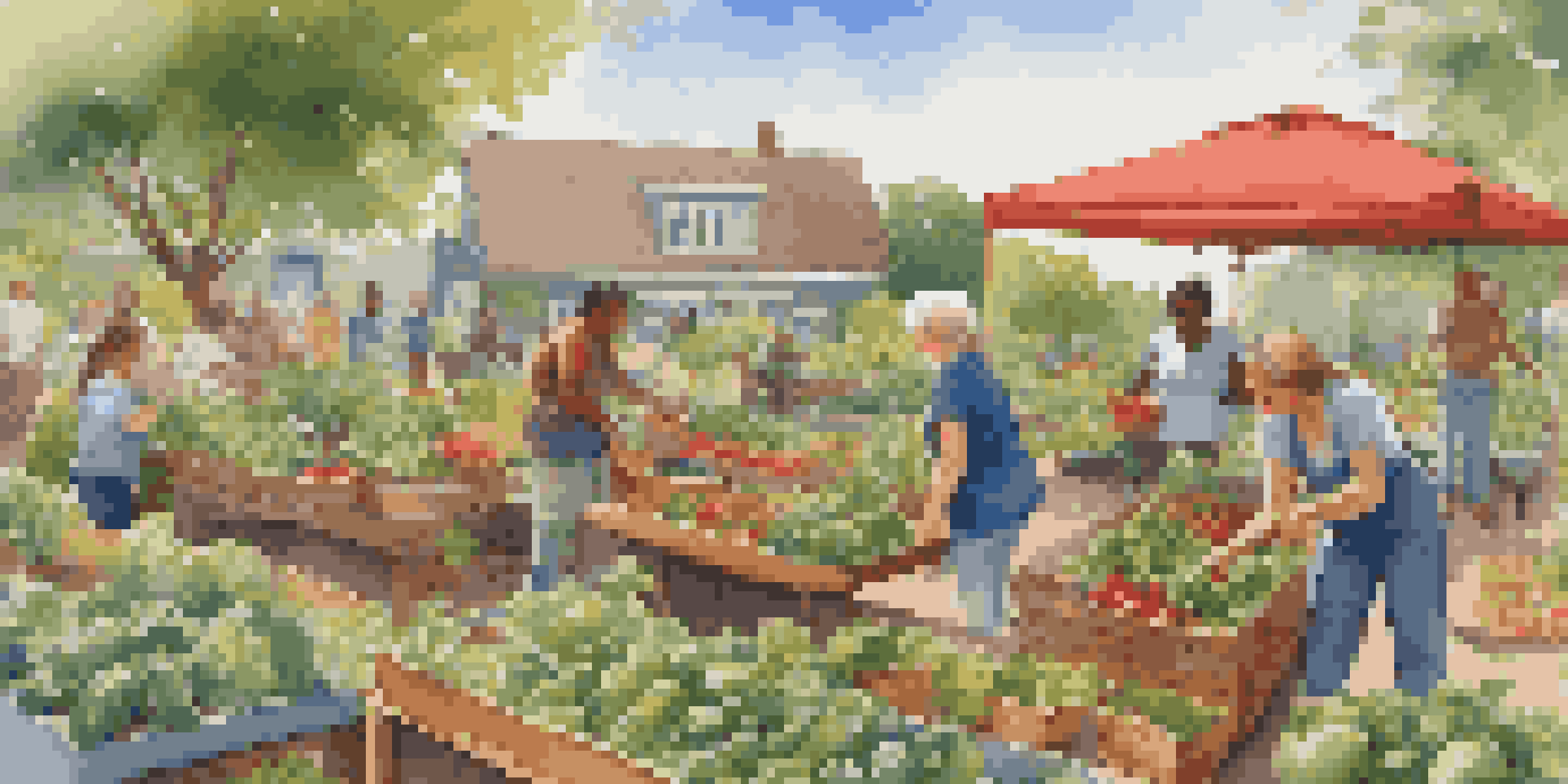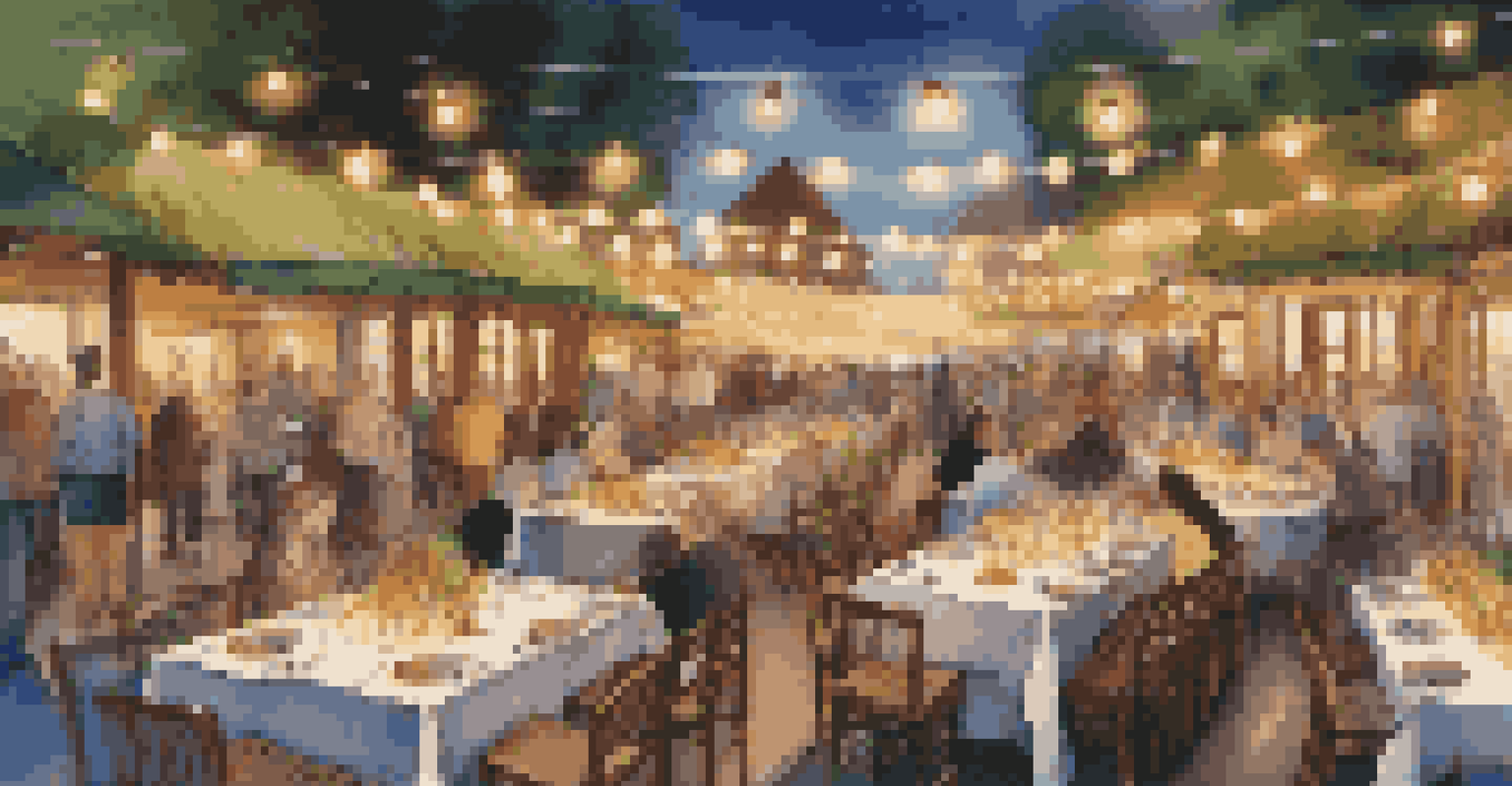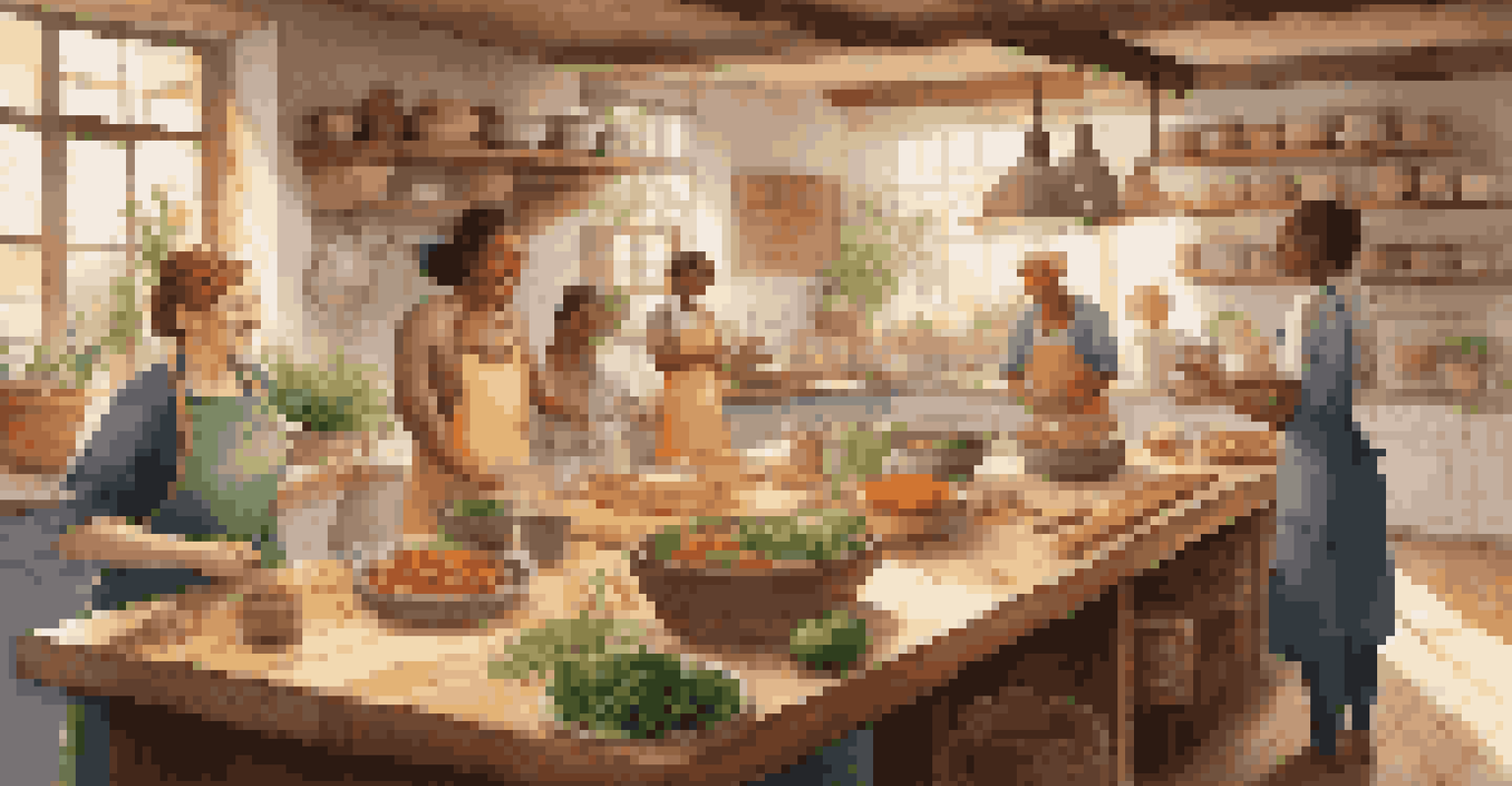Art and Food: Engaging Communities Through Culinary Creativity

The Intersection of Art and Culinary Creativity
Art and food have a unique way of connecting people, transcending cultural boundaries. When chefs infuse their culinary creations with artistic expression, they transform meals into experiences. Think of a beautifully plated dish, where every element is thoughtfully arranged, much like a canvas waiting for paint. This intersection not only delights the senses but also sparks conversations, making food a powerful medium for artistic expression.
Food is our common ground, a universal experience.
From vibrant food festivals to intimate art dinners, the fusion of these two worlds invites communities to explore flavors and aesthetics together. Each dish tells a story, often reflecting the chef's cultural heritage and personal journey. By engaging with food as an art form, we encourage a deeper appreciation for the skills and creativity involved in cooking.
Moreover, this blend of art and food creates opportunities for collaboration among artists, chefs, and local communities. When people come together to share their talents, it fosters a sense of belonging that enriches the community's cultural fabric.
Culinary Arts as a Community Engagement Tool
Culinary arts can serve as a powerful tool for community engagement, bringing diverse groups together to share experiences and ideas. Events like cooking classes or community potlucks encourage participation and collaboration. Imagine a neighborhood gathering where individuals from various backgrounds share their favorite recipes; it not only promotes cultural exchange but also strengthens community bonds.

Additionally, local businesses often host events that blend food and art, creating spaces for dialogue and connection. These gatherings can spark creativity and innovation, inspiring participants to experiment with their own culinary skills. The act of cooking together can break down barriers, making it easier for people to connect and share their stories.
Art Transforms Culinary Experiences
The fusion of art and food creates memorable dining experiences that connect people and celebrate cultural heritage.
By engaging communities through culinary arts, we also promote inclusivity and diversity. Everyone has a unique culinary background, and when shared, these experiences enrich the community, creating a vibrant tapestry of flavors and traditions.
Artistic Expression Through Food Festivals
Food festivals are vibrant celebrations of culinary creativity that often feature local artists and chefs. These events showcase not only delicious food but also the artistic flair behind each dish. Picture a food festival where culinary experts demonstrate their skills, turning cooking into a live art performance—captivating and educational at the same time.
Cooking is an art, and the plate is your canvas.
Beyond the food, these festivals often include art installations, live music, and interactive workshops, creating an immersive experience. They invite the community to participate, whether by tasting, learning, or simply enjoying the atmosphere. This fosters a sense of shared ownership and pride in local culture.
Moreover, food festivals can serve as platforms for promoting local businesses and artisans, boosting the economy while celebrating creativity. By highlighting the talents of local chefs and artists, these events cultivate a supportive community spirit that can lead to lasting connections.
The Role of Social Media in Culinary Art
In today's digital age, social media plays a significant role in promoting culinary art and engaging communities. Platforms like Instagram and TikTok allow chefs and food artists to share their creations with a broader audience, inspiring others to explore their culinary passions. A beautifully captured dish can go viral, encouraging food lovers to try new recipes and techniques.
Social media also enables real-time interaction between chefs and their followers, creating a sense of community and shared experience. For example, live cooking sessions or virtual dinner parties allow individuals to connect over food, regardless of geographical barriers. This digital engagement fosters a global community united by the love for culinary arts.
Community Engagement Through Cooking
Culinary arts foster community bonds by bringing diverse groups together for shared cooking experiences and cultural exchange.
Furthermore, social media can amplify local food events, attracting more participants and creating buzz around community gatherings. When people share their experiences online, it encourages others to join in, strengthening community ties through shared culinary adventures.
Culinary Art as a Form of Cultural Heritage
Food is an essential part of cultural identity, and culinary art serves as a powerful medium for preserving and sharing that heritage. Each recipe carries a story, often passed down through generations, reflecting the history and values of a community. By celebrating these traditions through culinary art, we honor our ancestors while keeping cultural practices alive.
Community events that focus on traditional cooking methods or local ingredients can educate participants about their cultural heritage. When individuals gather to learn and cook together, they not only share skills but also stories that connect them to their roots. This intergenerational exchange enriches the community's understanding of its culinary history.
Moreover, by showcasing diverse culinary traditions, we promote inclusivity and respect for different cultures. This shared appreciation for food as a cultural expression fosters unity and understanding, creating a more harmonious community.
The Impact of Community Gardens on Culinary Creativity
Community gardens have become a popular way to engage neighborhoods, providing both fresh produce and an opportunity for culinary creativity. These shared spaces allow individuals to grow their own fruits and vegetables, fostering a connection to the food they consume. Imagine the joy of harvesting your own tomatoes and turning them into a delicious sauce—it's a fulfilling experience that brings people together.
Moreover, community gardens often host workshops and cooking classes that emphasize using fresh, local ingredients. Participants can learn about the benefits of sustainable practices while experimenting with new recipes. This hands-on approach not only enhances culinary skills but also encourages a deeper appreciation for the food system.
Sustainability Shapes Culinary Future
The future of culinary art in community engagement will focus on sustainability, encouraging local sourcing and environmentally friendly practices.
By cultivating a sense of ownership and pride in their garden, community members build stronger connections with each other. These shared experiences create lasting friendships and a supportive network that extends beyond the garden itself.
The Future of Culinary Art in Community Engagement
As we look to the future, the role of culinary art in community engagement will continue to evolve. With growing interest in sustainability and local sourcing, chefs and artists are likely to prioritize environmentally friendly practices in their culinary creations. This shift not only supports local economies but also encourages communities to come together around shared values of sustainability and health.
Innovative approaches, such as pop-up restaurants or collaborative cooking events, will further transform the culinary landscape, making it more accessible and inclusive. These experiences can break down traditional barriers, inviting everyone to participate in the culinary arts, regardless of their background or skill level.

Ultimately, the future of culinary art in community engagement lies in its ability to adapt and inspire. As communities come together to celebrate their diverse culinary heritage, they will continue to strengthen bonds and create a sense of belonging that transcends the plate.